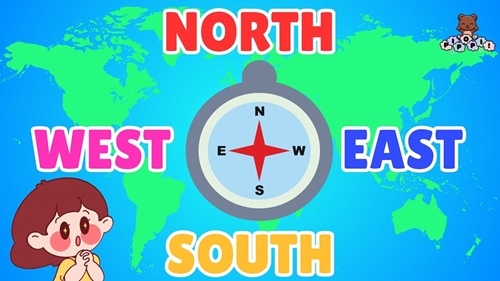Understanding directions—East, West, North, and South—is a fundamental skill for navigation, travel, and daily life. While smartphones and GPS devices have made it easy to know directions, traditional methods remain essential knowledge, especially during outdoor activities, emergencies, or power outages. Learning how to identify cardinal directions using natural signs, tools, and observation is both practical and fascinating.

1. Using the Sun
The sun is the most reliable natural indicator of directions:
- East: The sun rises in the east. Observing the sunrise in the morning will point you towards east.
- West: The sun sets in the west. Watching the sunset in the evening helps locate west.
- North and South: Once east and west are identified, stand with your right hand pointing towards south and left towards north in the northern hemisphere.
- Tip: The sun moves from east to west across the sky during the day, so shadows can also be used to determine directions.
2. Using Shadows
Shadow observation is a simple, ancient technique:
- Place a stick vertically on the ground.
- Mark the tip of the shadow in the morning; this points west.
- After some time, mark the tip of the shadow in the afternoon; this points east.
- Drawing a line between the two points gives an approximate east-west line, and perpendicular to it is the north-south line.
This method is accurate enough for daily navigation or outdoor camping.
3. Using a Compass
A compass is a traditional tool that shows cardinal directions accurately:
- The needle of the compass always points north due to Earth’s magnetic field.
- Once north is identified, east is to your right, west to your left, and south behind you.
- Digital or smartphone compasses also work well but may require calibration for accuracy.
4. Using Stars
At night, stars can help you identify directions:
- North Star (Polaris): In the northern hemisphere, the North Star is almost directly above the North Pole.
- Locate the Big Dipper constellation; the two outer stars of the “bowl” point to Polaris.
- Southern Hemisphere: Use the Southern Cross constellation to find the south.
- Stars provide a reliable guide during nighttime or in wilderness.
5. Using Natural Indicators
Nature often provides clues about directions:
- Trees and Moss: Moss tends to grow more on the north side of trees in the northern hemisphere because it is shadier and damper.
- Ant Hills: Some species of ants build slopes facing south to get sunlight, although this is not always precise.
- Wind Patterns: Coastal areas may have predictable sea and land breezes that indicate approximate direction.
6. Using Maps and Landmarks
- Traditional maps usually have north at the top, which helps identify directions in unfamiliar areas.
- Prominent landmarks such as rivers, roads, or mountains can also be referenced for orientation.
- Urban planning sometimes aligns streets north-south or east-west, which can be useful in cities.
7. Quick Tips for Daily Use
- Morning: Sun rises → East; Evening: Sun sets → West.
- Stand facing the sunrise → East in front, West behind, North on the left, South on the right.
- Keep a small compass or smartphone for precise directions during travel.
- Observe natural signs like moss, shadows, and star positions for outdoor navigation.
Quick Comparison Table: Cardinal Directions
| Direction | Sun Position | Compass | Other Indicators |
| East | Sunrise | Right of North | Morning shadow points west |
| West | Sunset | Left of North | Evening shadow points east |
| North | Opposite south | Needle points North | Moss grows on north side of trees |
| South | Opposite north | Behind North | Trees and ant hills slopes may face south |
Final Thoughts
Identifying East, West, North, and South is a vital life skill, useful for travel, outdoor activities, and emergency situations. By combining sun observation, shadows, compasses, stars, and natural indicators, anyone can reliably determine directions even without technology. Mastery of these techniques ensures confidence, safety, and better orientation in both urban and wilderness settings.